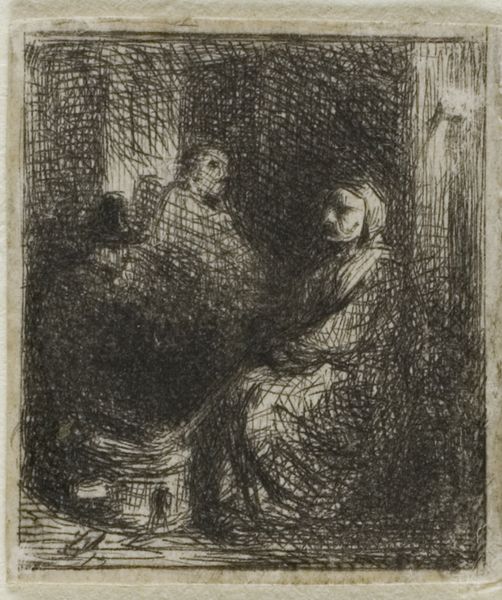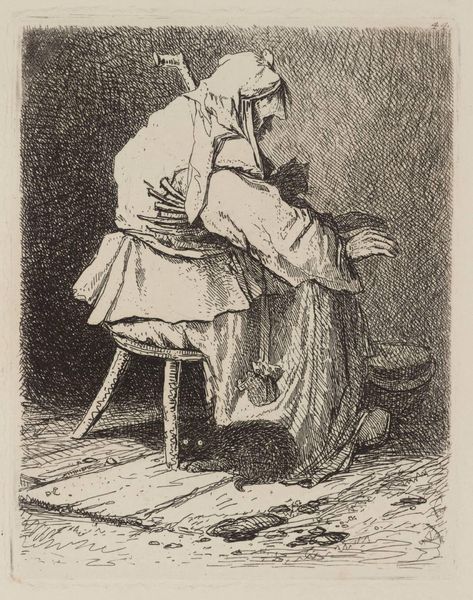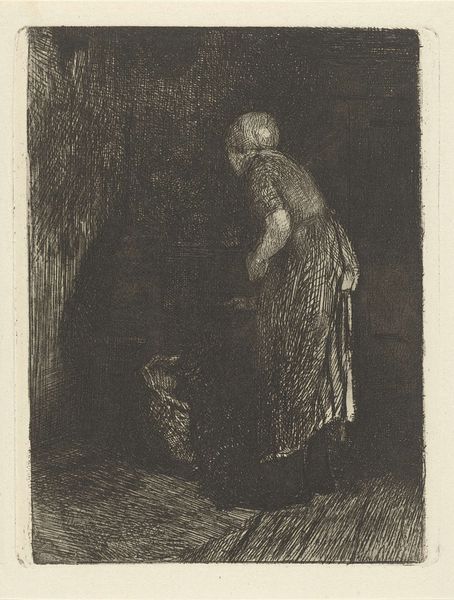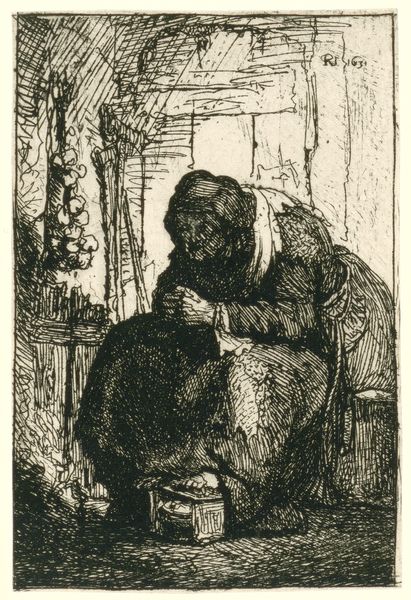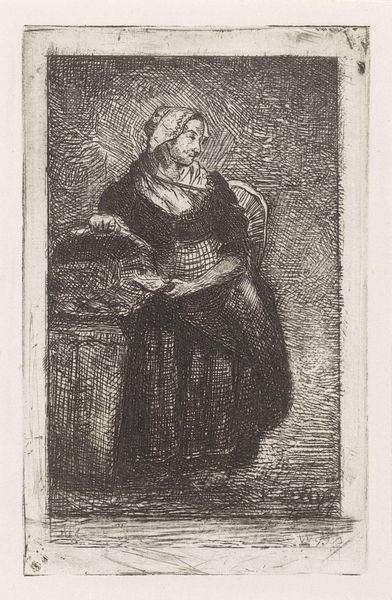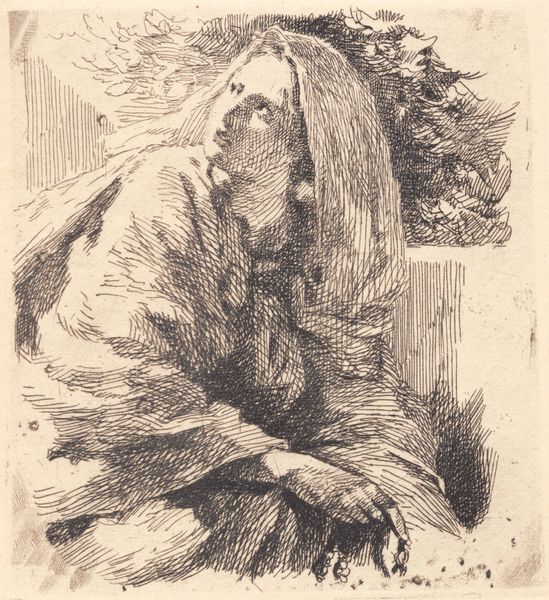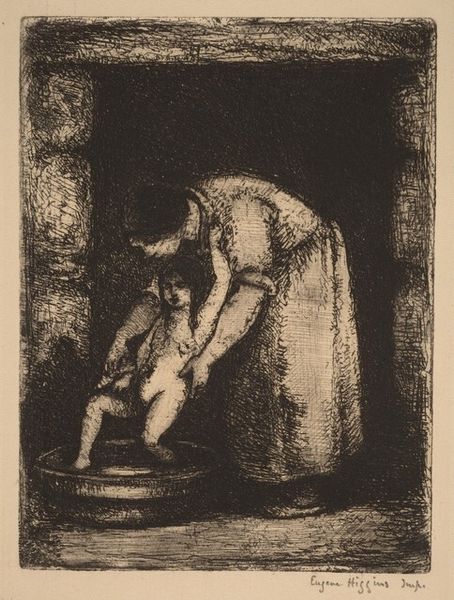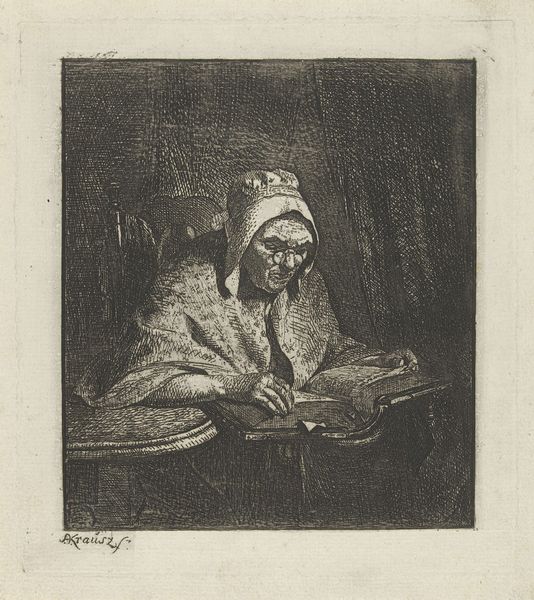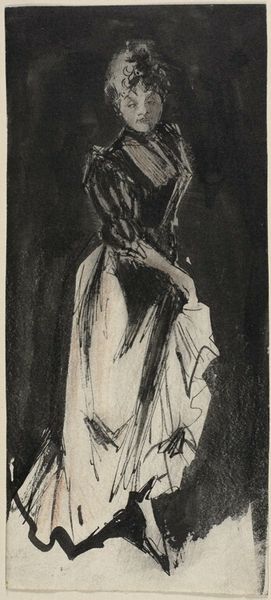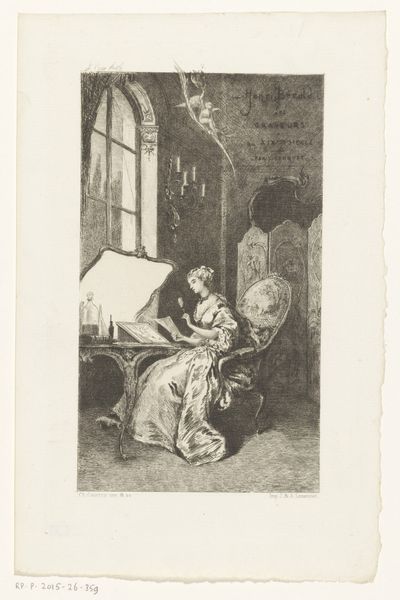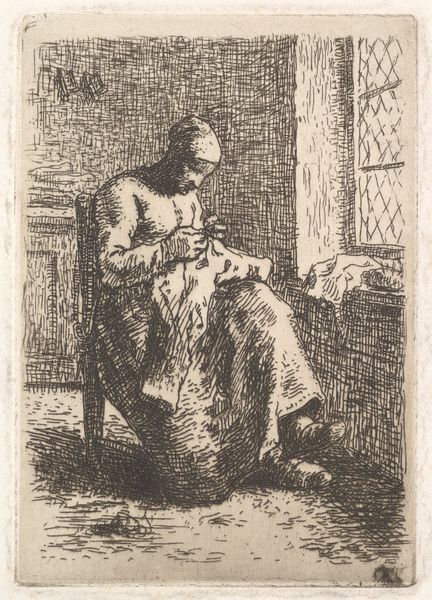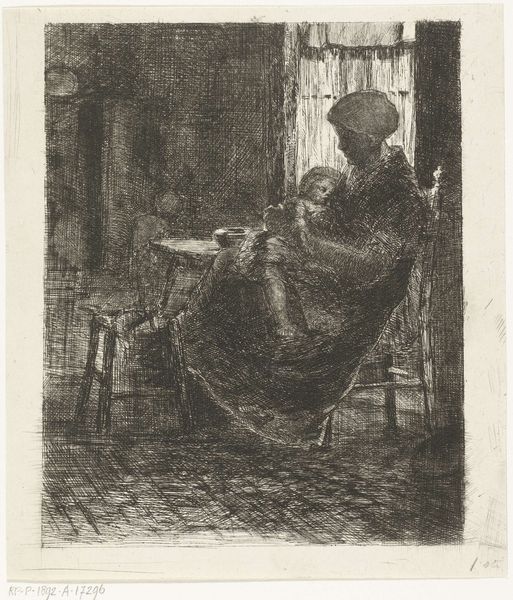
drawing, print, etching
#
portrait
#
drawing
# print
#
etching
#
figuration
#
realism
Copyright: Public domain
Curator: What a melancholy mood emanating from this print. Editor: Indeed. We're looking at a work entitled "Seated Arab" by Mariano Fortuny Marsal. It is an etching, a type of printmaking that lends itself particularly well to detailed line work and tonal gradations like we see here. Curator: The contrast is quite stark, isn't it? The figure is so enveloped by shadow that their form feels almost spectral, a being fading into the very texture of the background. There's a sense of confinement here, both physical and perhaps psychological, as the subject seems huddled against the wall, almost shrinking in size. Editor: It is an interesting study in the representation of Orientalism and its social underpinnings. We should remember that Fortuny, during his travels and work in North Africa, would have portrayed not just the landscapes and the daily life of the region, but he also engaged with European artistic tropes which constructed views of the "Orient." How does that interplay of observation and expectation impact our reception? Curator: A valid and crucial point to consider. The formal qualities of the etching technique itself certainly feed into those notions of Orientalism. The rough lines, the use of darkness... do they convey a romantic idea or some objective realism? It's something to consider whether those aspects reinforce stereotypes. The composition creates a somber atmosphere for the viewer. Is this empathy, or is it exoticization? Editor: Absolutely. And what does it say about the artist's position of power when selecting this moment to etch? How complicit were European artists in creating enduring visual and cultural narratives? This invites us to look closer at the political discourse in Europe at the time and the imagery it created. Curator: Thank you. Reflecting upon the European perspective makes it difficult to view only the expressive rendering and somber pose that evoke complex themes relating to identity and cultural representation. Editor: Indeed. Seeing it this way enriches the artwork's complexity for future audiences to learn more.
Comments
No comments
Be the first to comment and join the conversation on the ultimate creative platform.
